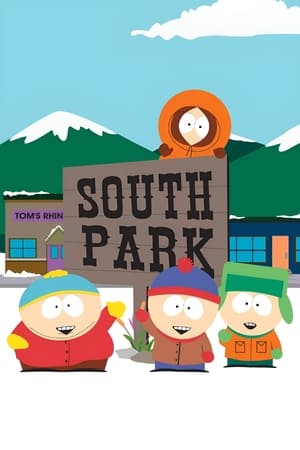Wild Germany
The fairytale river landscape of the Spreewald, the flocks of birds of the North Frisian Wadden Sea and the striking chalk cliffs on the island of Rügen. You can see unique landscapes and their fauna in the different regions of Germany.
Type: tv
Season: 9
Episode: N/A
Duration: 45 minutes
Release: 2011-04-18
Rating: 7
Season 1 - Wild Germany
2011-04-18
The documentary tells of this unusual habitat, which is heavily influenced by humans and yet is close to nature. The village of Lehde, which is crossed by numerous ditches, hidden under shady trees and full of picturesque corners, is considered to be the most attractive Spreewald idyll. There are a few courtyards in this water labyrinth, many of which can only be reached by boat today. When winter arrives, ice connects the islands in the Spreewald. The canals and waterways become comfortable walking and driving routes for days or weeks - anyone who has ever laboriously loaded or unloaded a boat appreciates the help of winter. And it is an unforgettable experience to experience the extraordinary river landscapes of the Spreewald on ice skates or toboggans. Christoph Hauschild sensitively stages the unique river landscape of the Spreewald.
2011-04-19
The water comes and goes twice a day on the coast of North Friesland in the far north of Germany. At low tide it exposes the Wadden Sea. This is 40 kilometers wide in places and is home to ten times more animals than other seabeds. Countless small animals - shrimp, sand crabs and cockles - in turn attract large flocks of birds. The Schleswig-Holstein Wadden Sea is part of the largest national park in Germany and has been part of the UNESCO World Heritage since 2009. The Halligen are unique in the world. There are ten of them, all located in the North Frisian Wadden Sea, often only accessible by lorry or ship. Unlike islands, Halligen are flooded several times a year and are still inhabited. The North Frisians built their settlements here on so-called mounds. These are hills that lie above the water surface even during storm surges. Life on the Halligen is more leisurely than on the mainland.
2011-04-20
The Black Forest is known worldwide for its cuckoo clocks and Black Forest cake. But the region has much more to offer: in the mountain forests there is silver fir, up to 60 meters high - a European record. One last impressive giant tree in the northern Black Forest is the 230-year-old, so-called grandfather fir, which towers over all the treetops in the area with a trunk circumference of 1.65 meters and a height of 45 meters. The capercaillie lives hidden in sparse old growth. The extremely shy birds are threatened with extinction due to the destruction of their habitat, climate change and growing tourism. A few lynxes and wildcats from the neighboring Vosges and Swiss Alps have recently been sneaking through the Black Forest again. Eradicated here in the last century, the two cat species return to their ancestral habitat almost unnoticed. There are also alpine animals and plants in the Black Forest that survived the Ice Age at rough altitudes for thousands of years.
2011-04-21
One of the most beautiful natural landscapes in the country lies on the Baltic Sea in north-eastern Germany. The chalk cliffs on the island of Rügen rise almost 120 meters into the sky and offer breeding opportunities for the rare peregrine falcon. In the beech forests of Jasmund on the edge of the white cliffs, badgers and fallow deer raise their young. The lagoons, known as Bodden, are among the most species-rich regions in Western Pomerania. They are only connected to the Baltic Sea by narrow straits and provide nesting and resting places for a large number of birds. In autumn, up to 60,000 cranes rest in the region where white-tailed eagles also hunt. In the Darsser Jungle, deer come to the dune belt of the beaches. There the bulls fight bitterly during the rut; a sight that can only be seen on the coast of Western Pomerania. In the shadow of the Dornbusch lighthouse on the island of Hidden sea lies one of the few colonies of little terns in the Baltic Sea.
2011-04-22
Extreme habitats such as the karst landscapes of the Steinernes Meer, the Watzmann with the highest rock face in the Eastern Alps, the Wimbachgries with its constantly shifting streams of debris and the Königssee, one of the deepest lakes in Germany, belong to the Berchtesgaden National Park. If you want to survive in this wilderness, you have to be perfectly adapted to your environment. The documentary introduces some of the most interesting mountain people. At dizzying heights there are chamois with their newborn fawns, always on the lookout for the claws of the golden eagle, and camouflage artists such as the ptarmigan and mountain flowers such as the legendary edelweiss. Marmots tussle on the high pastures, and in the depths of the Königssee the burbot spawns - originally a sea fish that ended up in fresh water ten million years ago.
2011-09-26
Deep river valleys and desert-like rock plateaus - Germany's "Grand Canyon" is Saxon Switzerland. Wind and water, heat and frost created the unique landscape of the Elbe Sandstone Mountains over millions of years. Rare animals such as garden dormouse, peregrine falcons and black storks have adapted to life on and between the sandstone cliffs. With extraordinary shots, this film portrays one of the greatest German natural wonders.
Season 2 - Wild Germany
2012-05-21
The first part of the series shows the Thuringian Forest. It is one of the largest forest areas in Germany. Mountain landscapes, meadows, valleys and bodies of water offer a varied natural experience. Thuringia is considered Germany's green heart. Over a third of its land area is covered by forest. In the west of the Free State lies the Thuringian Forest, a low mountain range almost 1,000 meters high, stretching from the Werra in the north-west to the Franconian Forest in the south-east. Not only squirrels and raccoons feel comfortable in the dense, partly original forests. The rare black storks have also settled here again. Red kites build their nests in the canopy, and even the shy wild cat finds enough cover here. European hamsters are still very numerous in the Thuringian Basin, one of the oldest cultural landscapes in Germany. It is one of the last refuges of the endangered rodents in Europe. Thuringia is famous for its castles. The best known is the Wartburg near Eisenach.
2012-05-22
The Palatinate Forest is located in the southwest of Germany, not far from the French border. Colorful red sandstone rocks and countless castles and ruins tower over the fragrant pine forests. The Trifels with its sublime imperial castle is the best-known rock castle. Wildcats and lynxes sneak through the undergrowth, red deer with magnificent antlers and Corsican mouflons with snail-shaped horns strut around in the largest contiguous forest area in Germany. On the border with France in the Dahner Felsenland, the landmark of the Palatinate Forest rises above the treetops: the Teufelstisch, the most famous rock formation in the Palatinate Forest Nature Park. The wine route, which runs along the eastern edge of the Palatinate Forest, invites you to linger with its romantic wine villages. The region is one of the warmest in Germany. And so Rock Bunting, Praying Mantis and Green Lizard have settled in the Tuscany of Germany.
2012-05-23
Lakes and hills, rivers and moors, extensive forests, fields and meadows - that's the Uckermark. In the north-east of Brandenburg, 80 kilometers from Berlin and in the direct vicinity of Mecklenburg-Western Pomerania and Poland, it is the largest district in Germany with over 3,000 square kilometers. Best conditions for nature: 60 percent of the Uckermark is under protection - in the Schorfheide-Chorin Biosphere Reserve in the south, in the Lower Oder Valley National Park in the east and in the Uckermark Lakes Nature Park in the north-west. As if on an ark, one encounters a particularly large number of rare animal and plant species in the Uckermark: eagles breed in the Waldmark, otters hunt for trout and lampreys in clear rivers, beavers dam streams into lakes, badgers, raccoon dogs and foxes live together with deer and Deer in the field mark. Above all, however, the varied landscape, shaped by the Ice Age, is the crane metropolis of Europe.
2012-05-24
The fourth episode in the series is dedicated to the Main. The river, which flows across Germany from east to west for more than 500 kilometers, is a reflection of German nature: tamed and yet unruly. Nowhere else can you see the power of life and the power of nature better. The Main is affectionately called the white sausage equator. In fact, it winds its way through Germany in many twists and turns over 542 kilometers from east to west. From the Fichtelgebirge to Mainz. It is the second longest river that flows along its entire length in Germany. At the same time, the Main is one of the most misunderstood rivers in the country. Because which images do you associate with the Main? The skyline of Frankfurt? The vineyards around Würzburg? The general image of the Main is shaped by the economic miracle after the Second World War. Back then progress meant everything, nature nothing. As a result, the Main looked more like a cesspool than a river in the 1960s and 1970s.
2012-05-25
The fifth part of the series portrays the Bavarian Forest on the border with the Czech Republic. The documentation shows how a catastrophe came about in the former commercial forest, which became known as the forest dieback. It demonstrates how the "jungle of tomorrow" is growing out of it today, how perfectly growth, growth and decay intertwine here and why the bark beetle that once triggered the catastrophe did not become a gravedigger but an obstetrician. When the number of bark beetles in the Bavarian Forest National Park increased to an exceptionally high rate in the 1980s, the national park administration deliberately failed to combat them, this had far-reaching consequences. Within a few years, several thousand hectares of old, formerly economically used spruce stands died in the high altitudes. Apocalyptic scenarios presented themselves to the visitor.
Season 3 - Wild Germany
2013-01-14
Almost 3,000 kilometers in length, the Danube is the second longest river in Europe. Because of the varied and attractive landscapes along its banks and the rare animal and plant species found there, the Danube is also known as the queen of rivers. Time and again man has tried to conquer the Danube. It was partially canalized and developed as a modern waterway. But the Upper Danube Valley, the Swabian Donaumoos, the Weltenburg Narrows or the mouth of the Isar could be preserved as natural paradises. Rarities such as the peregrine falcon, the European pond turtle, beaver and the curlew hide in the green wilderness along the blue river. The industrious rodent, which was wiped out almost all of Central Europe more than 100 years ago, only returned to its old homeland in the last few decades - thanks to extensive protective measures. Along the German section - from the springs in the wild and romantic Black Forest down to the Austrian border near Passau, the film journey shows the Danube.
2013-06-17
When spring comes, strange sounds fill the peaceful water world of Teichlausitz in the extreme south-east of Germany. What sounds like someone blowing into a bottle is the courtship call of the bittern, which can be heard from miles away. However, the extremely rare bird can hardly be spotted: if it feels observed, it stretches its head and beak straight up and moves gently in the wind like the reeds. In addition, the brown and black plumage makes the bittern almost invisible. Otters and elks also feel at home in the border region between Brandenburg and Saxony. And not far away, the overburden heaps and mining lakes of decades of open-cast lignite mining offer numerous wild animals valuable retreats. Recultivation areas and former military training areas are now home to animals that have all but disappeared in this country. Iridescent bee-eaters and hoopoes breed on the heath because they find plenty of insects there.
2013-06-18
Blue lakes surrounded by forest, lovely bays, wild solitude: in the north of Brandenburg there are lakes whose clarity is reminiscent of crystals. More than 100 of them are in the Stechlin-Ruppiner Land nature park. Above all the Stechlin east of Rheinsberg. It is 69 meters deep, particularly clear and one of the best-researched lakes. Sunbeams play on the backs of silver perch many meters below the surface. In the thicket of riparian vegetation, pike lurk in wait for the right moment to strike at lightning speed. When the water warms up in spring, several male pike will court a female. At his side, they animate the chosen one to give up eggs, scenes that have never been filmed like this before. Large, partly swampy forests surround the Stechlin and shield it from of modern agriculture. Slurry and fertilizers hardly get into the lake. The forest not only protects the lake, one of the fastest birds in the world has recently started breeding here again: the peregrine falcon.
2013-06-20
A fascinating parallel world between people, skyscrapers and multi-lane roads: millions of wild animals such as raccoons, foxes, bats, squirrels and beavers make their home in the green metropolis. There is at least one pair of birds for every resident of the capital, nowhere else are there so many sparrows and nightingales. Roland Gockel and Rosie Koch watched the animals change with the seasons.
Season 4 - Wild Germany
Season 5 - Wild Germany
Season 6 - Wild Germany
2016-03-14
2016-03-16
2016-03-17
2016-03-18
2016-09-28
2016-10-09
Season 7 - Wild Germany
Season 8 - Wild Germany
2018-04-18
2020-10-03
Season 9 - Wild Germany
YOU MAY ALSO LIKE



















